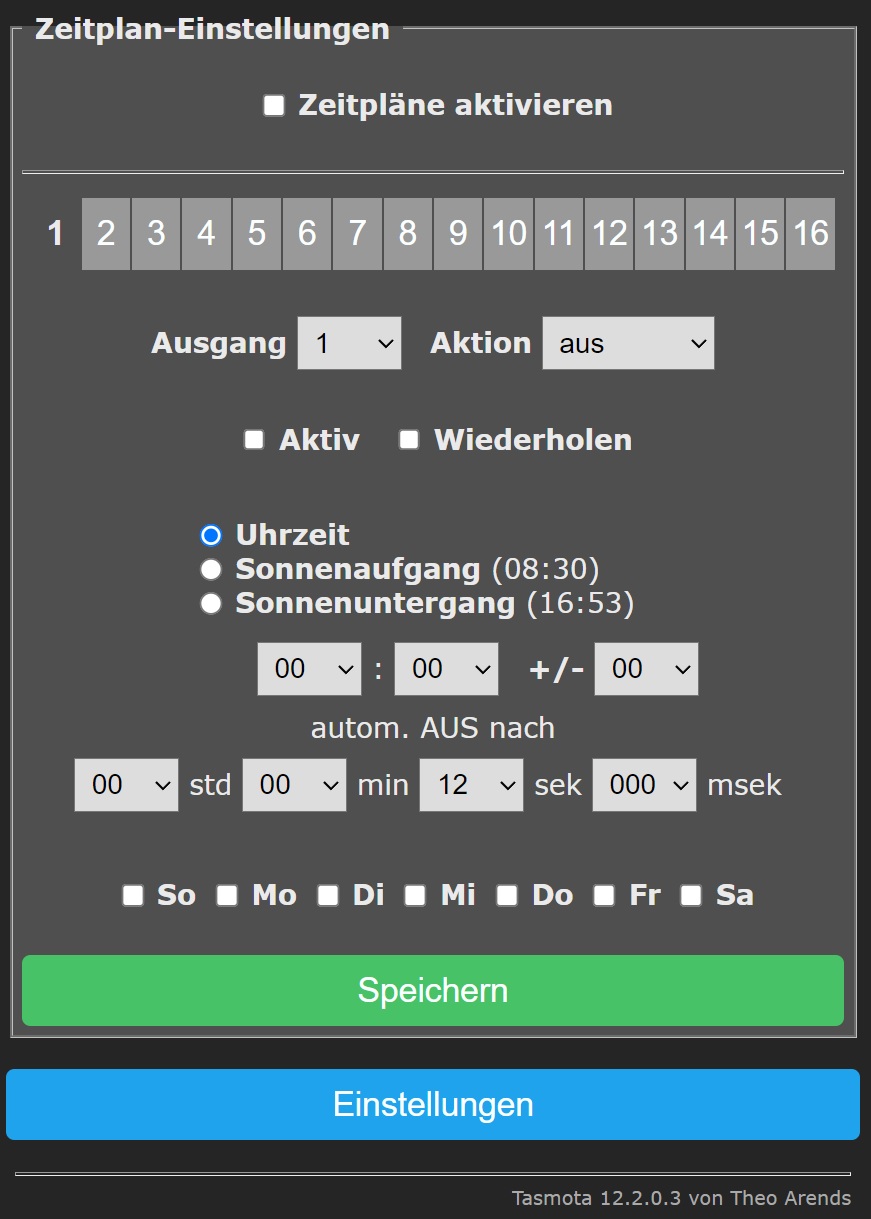Replies: 2 comments 2 replies
-
|
Gobbling up so much settings space for a quite slim edge case is not likely to be done in the project, especially when what you want can can be done with rules without too much trouble. Reserving bytes in settings for single purposes is not a question of specific "plans", but about being parsimonious with very limited resources, with other solutions preferred. Some drivers get around this by not depending on persistent settings, but reestablishing values automatically after boot. Disclaimer: I'm not project owner, nor much involved in development, the above "merely" aligns with what I've seen during my involvement. |
Beta Was this translation helpful? Give feedback.
-
|
Thank you for your comment sfromis. I total understand and agree with you, to use as less as possible settings space.
uint16_t ex_pulse_timer[8]; // 532 ex_pulse_timer free since 11.0.0.3 (Above setting memory was used originally for pulsetimer in older tasmota version). Question: Thanks again for reviewing! |
Beta Was this translation helpful? Give feedback.
Uh oh!
There was an error while loading. Please reload this page.
-
I have a requirement to set different pulsetimes for a output/relais, depending on the time.
Tasmota support a pulsetime for each output/relais, but unfortunatly this pulsetime is fixed for all timer events.
This requirement can maybe realized by script, but I (and maybe others) like to have a web interface to configure such simple timeout more easyily.
Reason as example:
watering system for flowers/garden:
mornig time: need more water (pump must work longer before auto-power-off)
noon time: need less water (pump must work shorter before auto-power-off)
evening time: need more water (pump must work longer before auto-power-off)
heather switching (by socket/relais):
morning time: longer heating period before auto-power-off
noon time: short heating period before auto-power-off
evening time: longer heating period before auto-power-off
Advantage:
No rule nor script need to be written.
No need to utilize an additional timer to switch off the output.
No limitation to the minimum 1 minute resolution of the timer setting.
No need to have a (WLAN) connection to the ESP to send power-off command, power off automactic done locally.
Timeout is as same as pulsetime (100ms steps until 11seconds or 1sec. steps until approx. 15 hours).
The web interface allows easy timeout setting (h/m/s/ms).
I already modified some code for testing (based on 12.2.0.3), mainly the xdrv_09_timers.ino, to support up to 16 individual pulsetimer.
The code:
Timer1 {"Enable":1,"Mode":0,"Time":"14:15","Window":0,"Days":"1111111","Repeat":1,"Output":1,"Action":1,"PulseTime":120}
or
Timer1 {"Enable":1,"Mode":0,"Time":"14:15","Window":0,"Days":"1111111","Repeat":1,"Output":1,"Action":1,"PulseTime":0}
instead of:
Timer1 {"Enable":1,"Mode":0,"Time":"13:30","Window":0,"Days":"1111111","Repeat":1,"Output":1,"Action":1}
(if poweronstate = 4, than pulsetime (if set) will be everytime restarted, because power never goes off. This continues endless.)
NOW before I continue, a big question to the maintainer and developer team of tasmota:
I would like to utilze 16 words (32 bytes) of the settings area, to store all pulsetimers there.
The most logical place to put the variables would be the Timer structure, but this will move all following parameters to a different position (+32).
To avoid a parameter movement, I would like to utilize the memory area of the TSettings struct:
uint8_t free_ea6[32]; // EA6
and change it to something like:
uint16_t timer_pulse_timer[16]; // EA6
or
uint16_t timer_pulse_timer[MAX_TIMERS]; // EA6
Question:
Thanks a lot for your comment.

Volker
[screenshot sample web i/f]
Beta Was this translation helpful? Give feedback.
All reactions